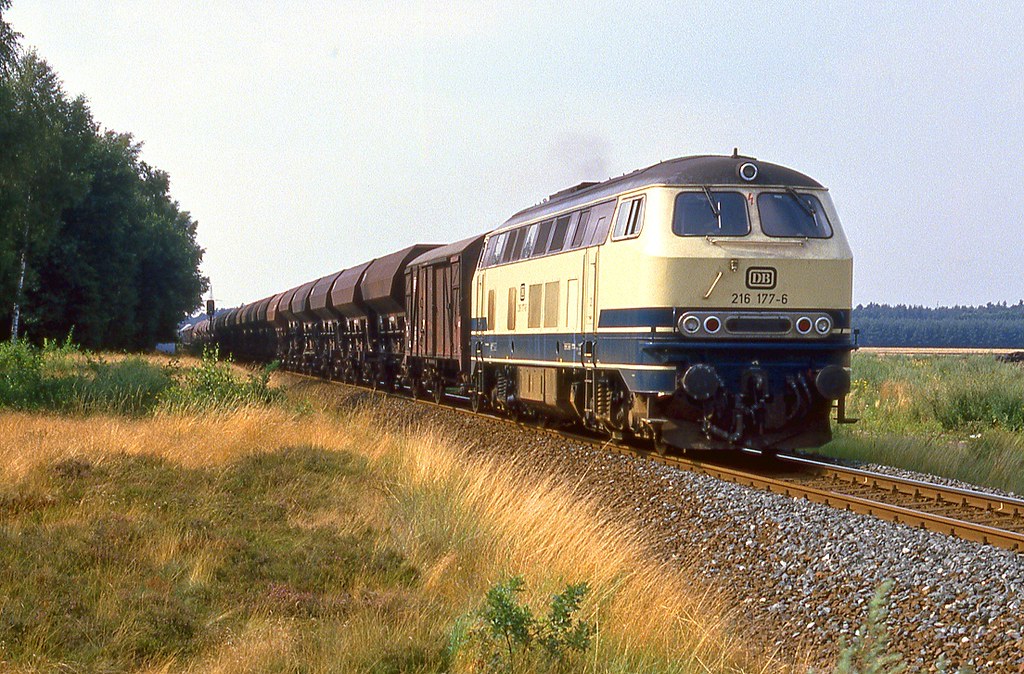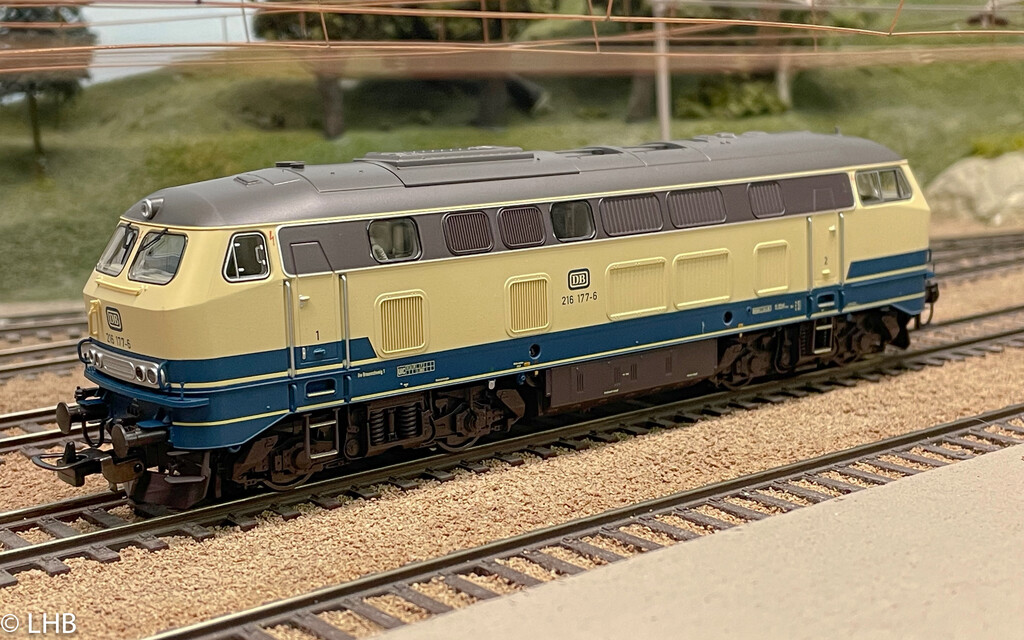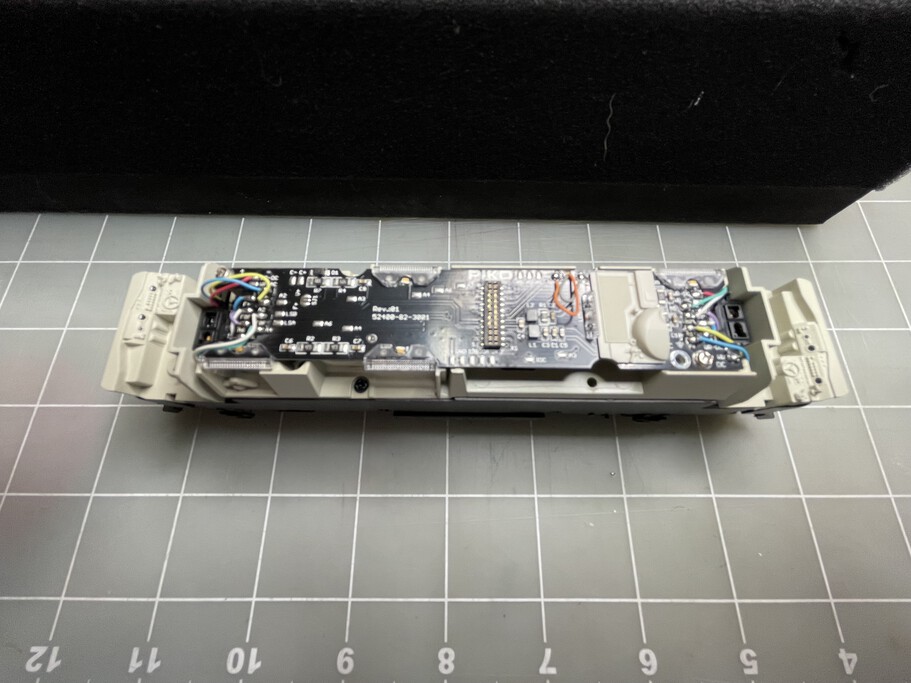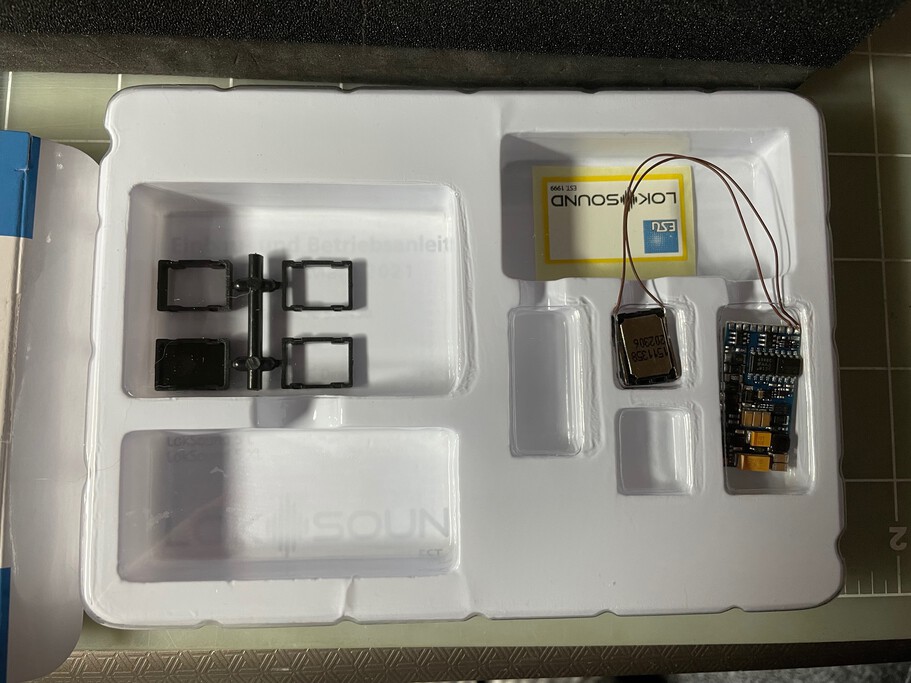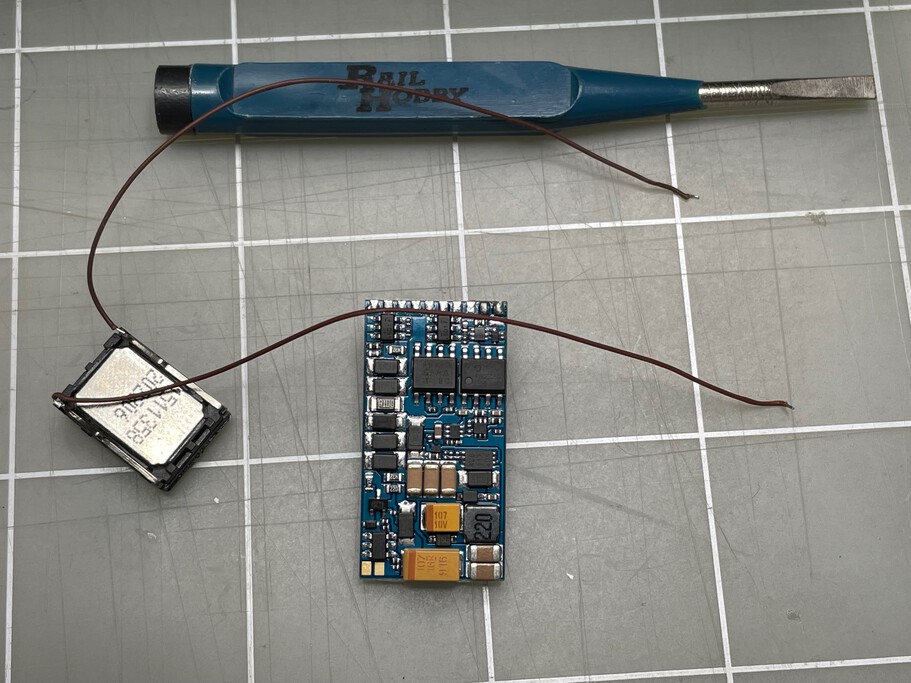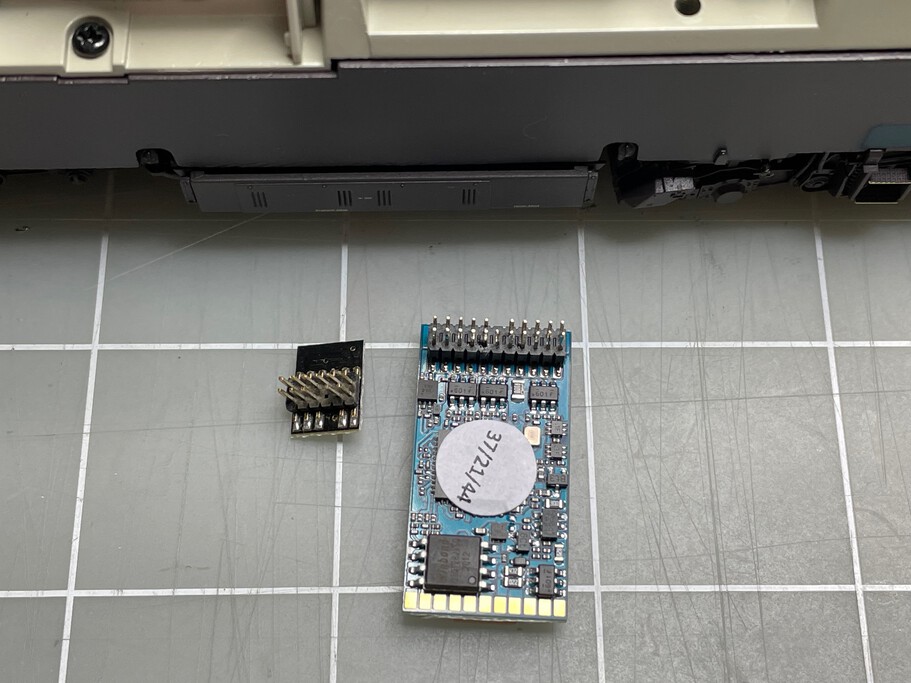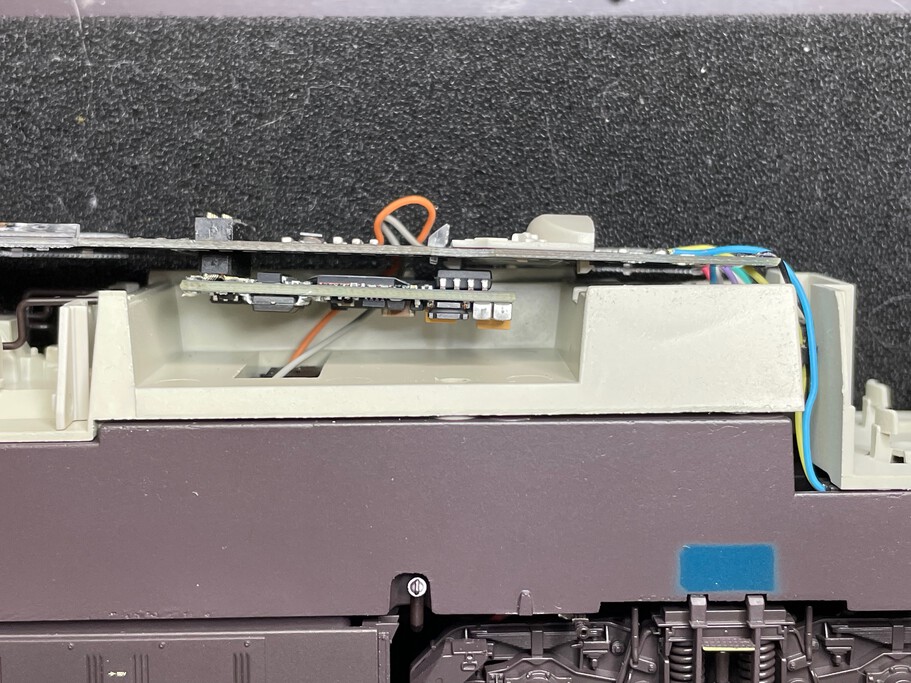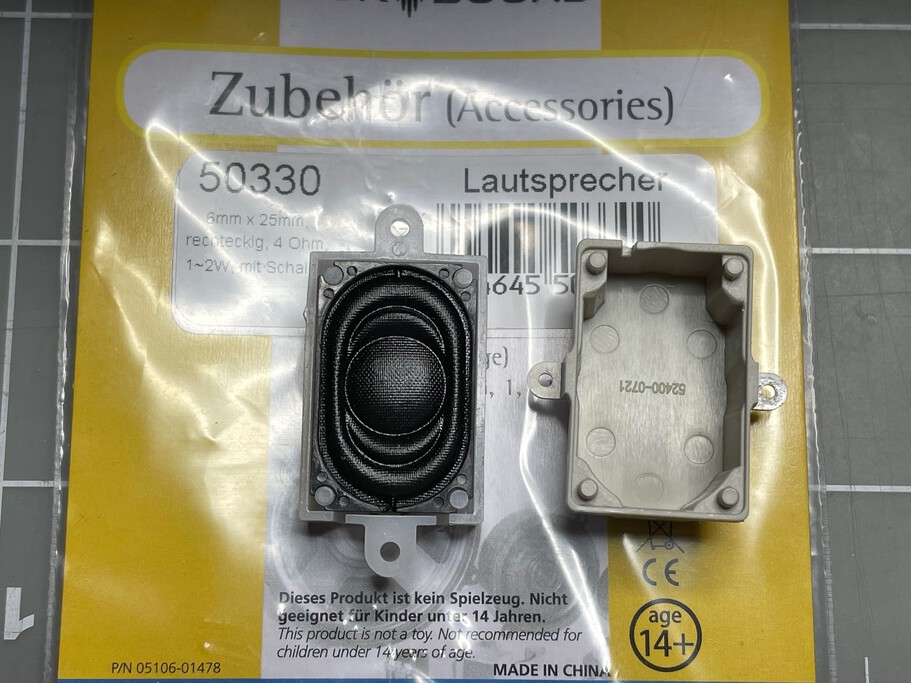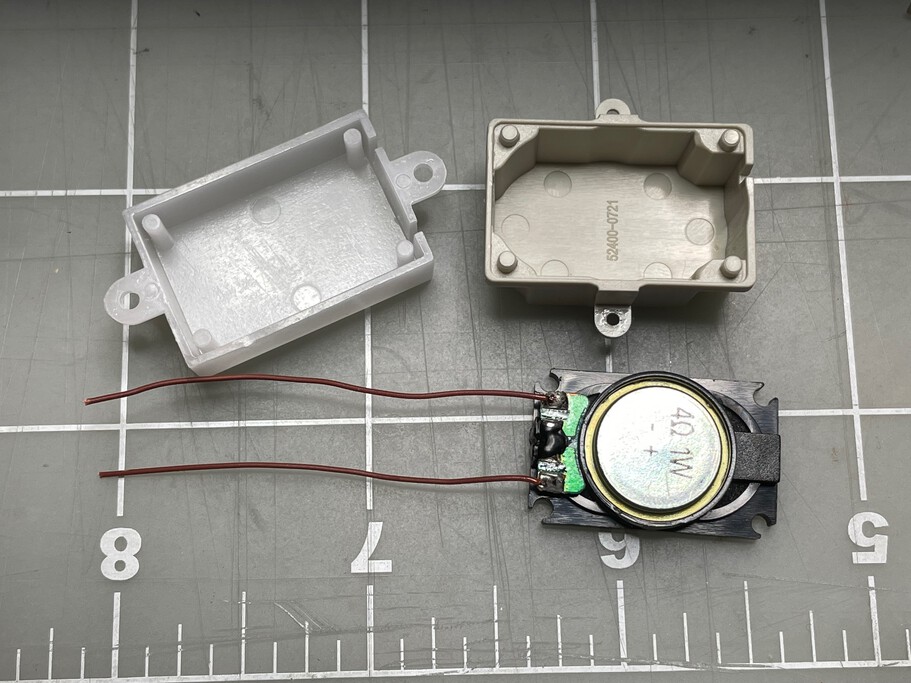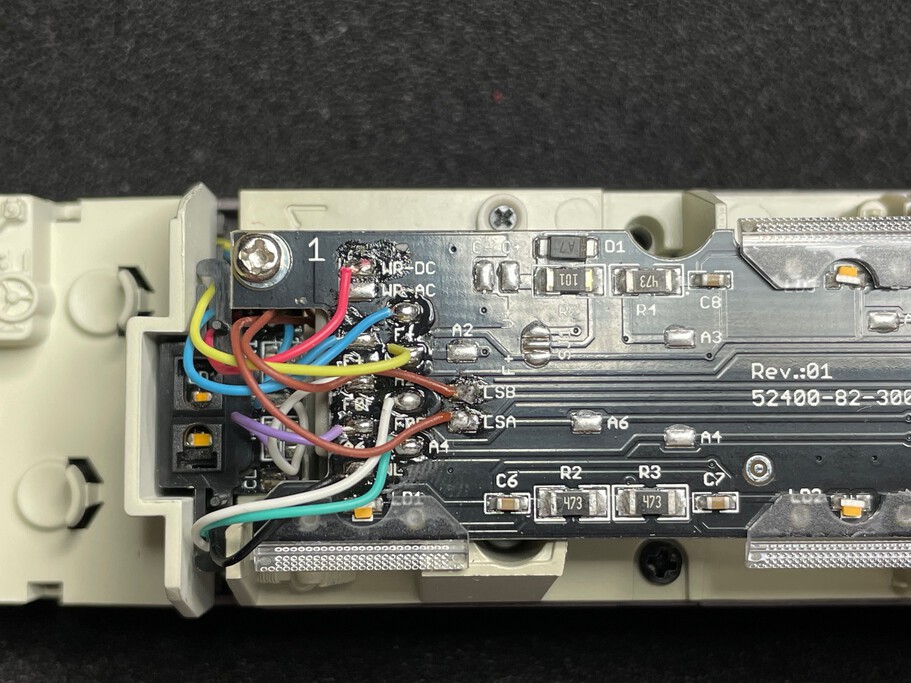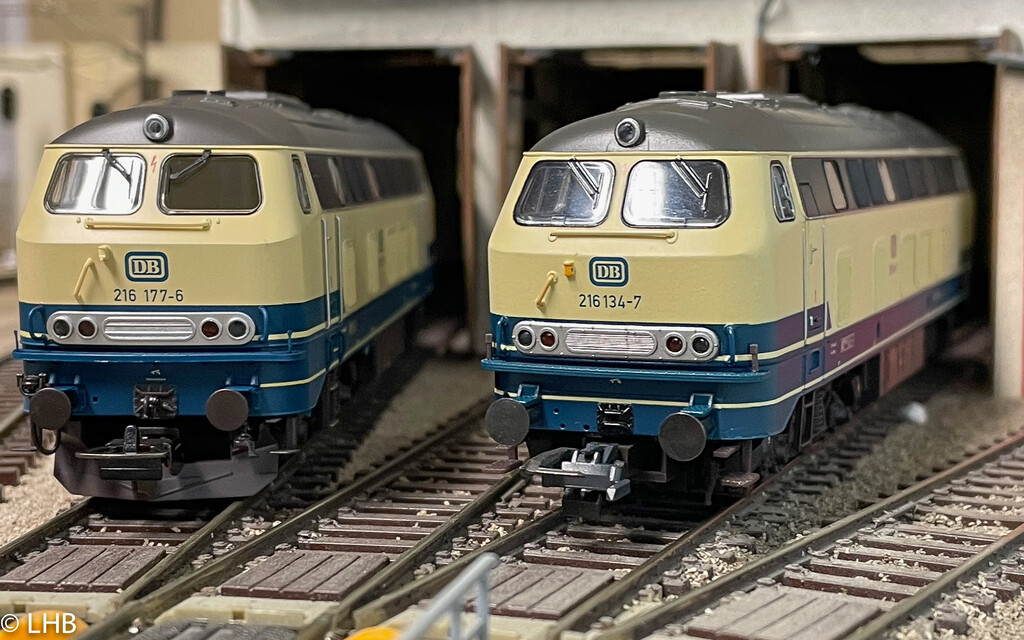Introduction to the Piko 216 177-6
Piko introduced a model of the 216 010-9 in 2020. With that introduction it was clear that Piko would also introduce a serie model of the 216 and in 2021 it released a model of the 216 177-6 in the ocean blue-beige color scheme.
See class 216 models in HO for a brief history of the class 216 and all the 216 models in my collection.
Specifically to the 216 177-6. It was built in 1968 and was in the older red color until 1985. In April 1985 it had a revision and got the ocean blue-beige color. It was in service until 1993 and it was scrapped in December 1995.
DCC Sound Installation
The parts for this story. The Piko 216, catalog no: 52408. An ESU Loksound 5 decoder (58412) and an ESU speaker (50330).
The decoder will get the sound of ESU project 22442 and the function mapping of the ESU Piko project 94473. The sound is the same as the ESU 216 model.
The shell can be removed by removing two screws. This shows the PCB from the top. The PLUX22 connector is visible but the mounting from the bottom of the PCB.
The ESU Loksound 5 decoder (with PLUX 22 connector) ships with an attached sugarcube speaker. I'm not using this speaker in this install, so we are carefully desoldering the wires from the decoder. The speaker goes into the parts box for future use.
The locomotive has a speaker enclosure that fits the ESU 16x25 speaker. ESU ships it with an enclosure, so you have to remove the speaker from the existing enclosure and pressure fit it on the Piko enclosure. Separate leads are soldered to the speaker before it is pressure fitted into the Piko enclosure.
The enclosure is mounted back into the frame, underneath the PCB. You can see the two small screws that fix the enclosure. The wires are soldered to the specific locations (lsa/lsb) on the PCB. Then the PCB can be screwed back on the frame and the shell can be fitted again as well.
Now the Piko 216 is ready for service. Here it is sitting at the roundhouse next to the model of the 216 134-7 made by Brawa. This allows for a nice comparison between the two models. The Brawa mode is from 2001, the Piko from 2021. 20 years in modelrailroad technology makes a difference. But the Brawa model is holding up very well.
